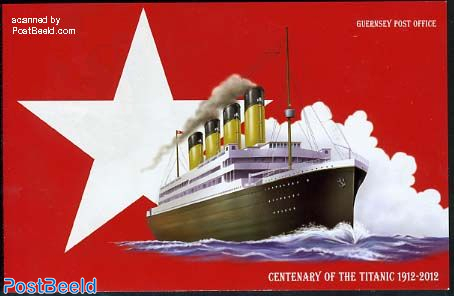
On 15 April 1912, the RMS Titanic struck an iceberg in the Atlantic Ocean and sank within three hours, with the loss of more than 1,500 lives. Recent events, with the tragic loss of life of those in the OceanGate Expeditions’ “Titan” submersible vehicle whilst attempting to visit the site of the wreck of the Titanic has once more brought the ship into the news. There have been many articles and books written on the subject of the Titanic and its sinking and in 1997 the very successful film “Titanic” was released.

What is not often discussed is the operation of the postal service that existed on the ship. The RMS in the ship’s title stood for Royal Mail Steamer, indicating that the Titanic was contracted to carry mail. Later RMS would become Royal Mail Ship. The Titanic had a Post Office and Mail Room, complete with five workers, deep in the ship. The postal staff’s function was to sort most of the mail which had been brought on board the ship – 3,364 bags in total – and to deal with any letters which were posted on the ship by passengers and crew. The postal workers, British citizens James Williamson and Jago Smith and US citizens William Gwinn, John March and Oscar Woody, were celebrating Woody’s 44th birthday when the ship struck the iceberg. However, they soon realised that the Mail Room was flooding and so attempted to move 200 sacks of registered mail to the upper decks in the hope of saving them. They even forced several stewards to help them, as a survivor later recalled:
“I urged them to leave their work. They shook their heads and continued working. It might have been an inrush of water later that cut off their escape, or it may have been the explosion. I saw them no more.“

Above is the cover of a stamp booklet that contained four of the 65p stamps seen below on the Guernsey/Alderney 2012 issue.

And the Alderney stamps above show: 36p – Leaving Southampton; 47p – Sailing past Alderney; 48p – The grand staircase; 52p – Orchestra plays final tune; 61p – Captain Edward J. Smith; and 65p – Lifeboats leaving the ship.

In 2012 Hungary’s Magyar Posta issued a special embossed stamp sheet in commemoration of the Titanic and the Hungarian Dr. Árpád Lengyel, surgeon of the British steamship RMS Carpathia, the first ship to arrive to help the survivors of the disaster. The sheet shows the Titanic moving towards the iceberg, and parts of the ship are shown within the perforations. In the top right-hand corner of the sheet is a portrait of Dr. Árpád Lengyel with the Carpathia in the background.

The 2012 stamp sheet from the Isle of Man features artwork, actual photographs and memorabilia. Captain Edward John Smith’s portrait can be seen on the 68p stamp.

And to commemorate the centenary of the Titanic disaster the Central African Republic issued two stamp sheets featuring children who survived the sinking of the ship. The English child holding the doll is Eva Hart (1905-1996) with two American girls below and right, Dorothy Gibson and Ruth Elizabeth Becker.
The young boys on the 2700F stamp are Michel ‘Lolo’ and Edmond Navratil (follow this link for the children’s fascinating story https://cherbourg-titanic.com/en/2011/12/les-enfants-navratil-les-orphelins-du-titanic/#:~:text=Michel%20Navratil%20and%20his%20two,children%20into%20a%20life%20raft). The background artwork on the sheet shows part of the interior of one of the ship’s First Class cabins, a cherubin from the main staircase and the ship’s helm. The helm’s full inscription reads “Brown’s Patent Telemotor Rosebank Ironworks Edinburgh”. In the 1870s Andrew Betts Brown invented and patented the “Telemotor”, an innovative mechanism which allowed for the removal of the dozens of complex gears and chains that had previously clogged up space on steamships between the wheelhouse and engine room. Using hydraulic technology, the steam valves of the rudder engines could be connected to the main wheel in the wheelhouse. On massive ships such as the Titanic, where the wheelhouse was situated hundreds of feet away from the engine room, as seen in the diagram below, the telemotor was a crucial piece of kit.

![]()
